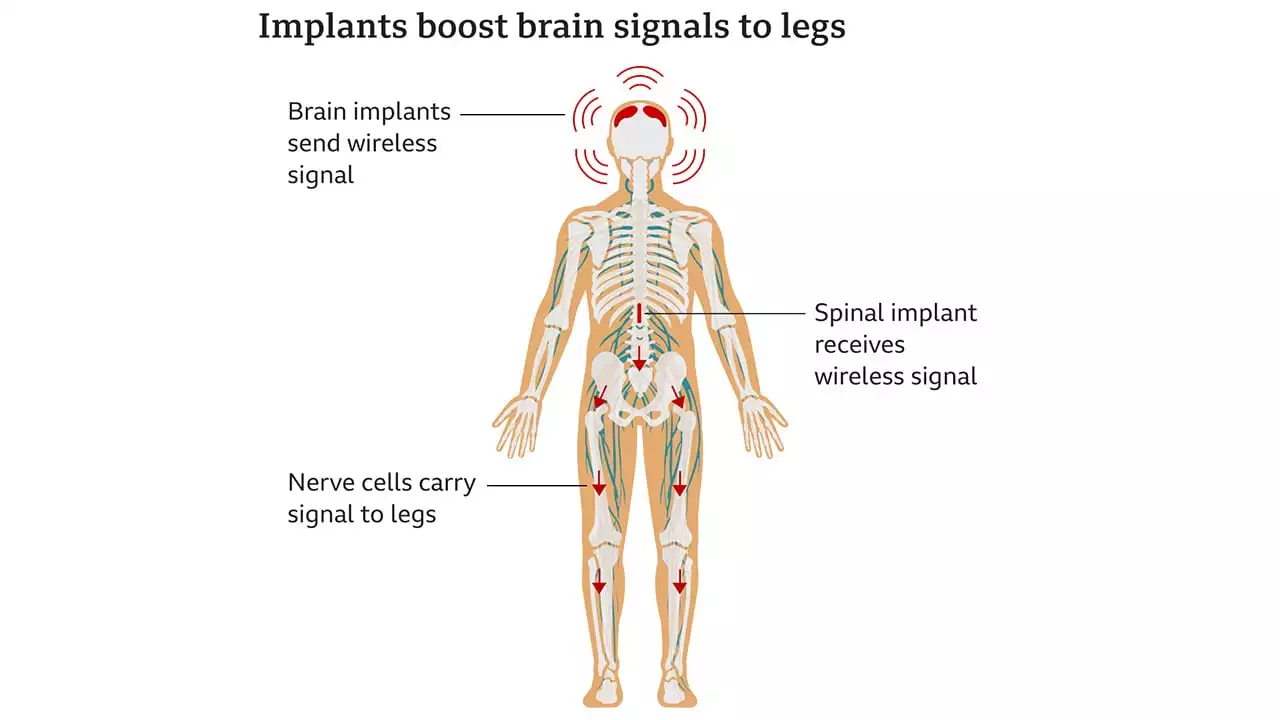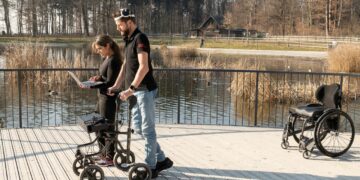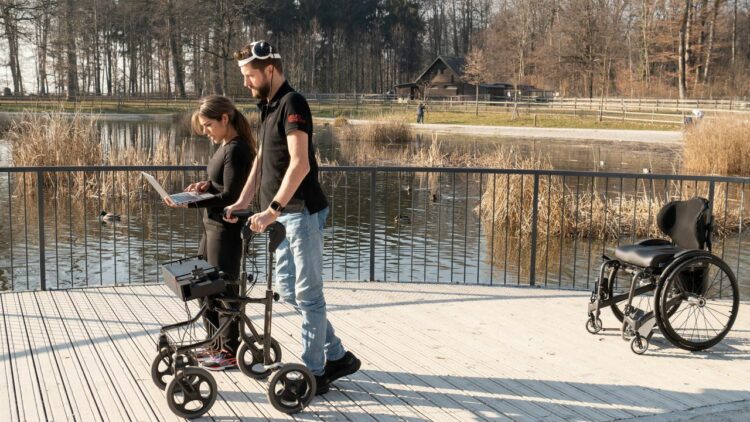A paralyzed man for 12 years has been able to walk again just by thinking of it with the help of electronic brain implants.
Brain Implants Helped Paralysed Man to Walk Again

Read Also: 13-Year-Old Boy Fatally Shot in New York Playground Attack: Tragic Loss.
Gert-Jan Oskam, a 40-year-old Dutchman, has been paralyzed for 12 years because of a cycling accident. The electric brain implants helped him walk again by transmitting his thoughts to his feet and legs via a second implant on his spine. This technique is still experimental, but UK spinal charity said it is encouraging.
The operation of Gert-Jan was carried out in July 2021. Prof Bloch cut two circular holes on both sides of his skull, which were 5cm in diameter and above the brain’s regions involved in controlling movement. And then she inserted two disc-shaped brain implants, which will be used to transmit Gert-Jan’s brain signals to the sensors attached to the helmets on his head.
The Swiss team has developed an algorithm that can convert these signals into instructions that will further help move leg and foot muscles with the help of a second implant inserted around Mr. OsKam’s spinal cord.
In his interview, Mr. Oskam told the BBC that he feels like a toddler and is learning to walk again. Now he can stand up and climb the stairs using the electric brain implants technique. Further, Mr. Oskam said it was a long journey, but now he can stand up and have a beer with his friends. This is a pleasure that many people aren’t able to feel.
Swiss researchers have led the development of this electric brain implants technology. Jocelyne Bloch, a professor at Lausanne University, who also carried out the delicate surgery to insert the implants, also stresses that this technique is still at its basic research level and many years away from being available for paralyzed patients.
But they aim to get this technology from the lab to clinicians as soon as possible to help the patients feel the pleasure of having their legs again. Further, the professor said that this technique is not limited to legs but will also focus on giving more access to people who are having with spinal cord injuries, the case in which doctors mainly advised you to stick to the fact that there is not any other way which can help you. You will never be able to move again. But with the success of this technology, people will be able to move again just by their thinking process.
Harvey Sihota, the chief executive of the UK charity Spinal Research, who was not part of this research, says, Although this will take many years to be successful and be available to the public still a very encouraging solution. While it needs a lot of improvements, it is still an exciting and significant step towards the roadmap for neurotechnology and its role in restoring the functions of our spinal core injury community.
Found this article interesting? Follow us on Facebook and Instagram to read more exclusive content we post.















